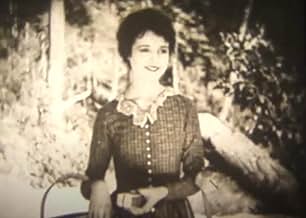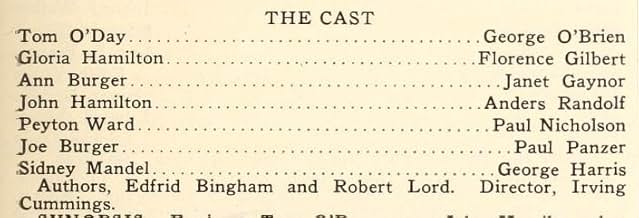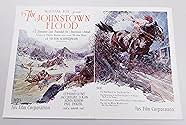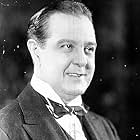Follows Tom O'Day, who is loved by two women: Anna Burger and Gloria Hamilton. He has no idea of Anna's love for him, and he becomes engaged to Gloria.Follows Tom O'Day, who is loved by two women: Anna Burger and Gloria Hamilton. He has no idea of Anna's love for him, and he becomes engaged to Gloria.Follows Tom O'Day, who is loved by two women: Anna Burger and Gloria Hamilton. He has no idea of Anna's love for him, and he becomes engaged to Gloria.
Elmo Billings
- Young Boy
- (uncredited)
Gary Cooper
- Flood Survivor
- (uncredited)
Kay Deslys
- Dance Hall Queen
- (uncredited)
Clark Gable
- Townsman Standing at Bar in Saloon
- (uncredited)
Florence Lawrence
- Townswoman
- (uncredited)
Carole Lombard
- One of Gloria's Four Friends
- (uncredited)
- …
Babe London
- Saloon Dance Hall Performer
- (uncredited)
George Reed
- Dinty - Camp Cook
- (uncredited)
- Director
- Writers
- All cast & crew
- Production, box office & more at IMDbPro
Storyline
Did you know
- TriviaCarole Lombard(uncredited) plays one of Gloria's four friends, who are all in three key scenes: one in which they are eavesdropping while Tom proposes marriage, another while Gloria is getting dressed for her wedding, and finally as bridesmaids at the wedding. Lombard is standing directly between and behind Tom and Gloria.Clark Gable(also uncredited) can be recognized as one of a group of men standing in front of a bar in a briefly glimpsed medium shot. (Gable and Lombard did not actually meet until several years later when they starred opposite each other inNo Man of Her Own (1932).)Gary Cooperalso appears in a small part - actually two small parts, as both a flood victim and a survivor.
- GoofsThe film has railroad tracks crossing right in front of the dam. The dam fails just as the train carrying the villain (in the form of the timber company owner and architect of this disastrous flood) crosses in front of it. Evidently, this was the director's effort to have the villain punished for his wicked deed of putting profit over lives. BUT there was no railroad crossing in front of the dam. And as there was no timber concern there was no evil company owner/villain to punish. YET there was a railroad running much of the valley through which the flood traveled to Johnstown. And this is where one of the greatest heroes of the disaster achieved notoriety. An engineer, John Hess, heard the rumbling of the approaching flood, threw his engine into reverse and raced backwards down the valley, ahead of the flood, blowing his whistle to warn people of the approaching disaster (this warning saved many people who were able to reach high ground and safety). Eventually, the flood waters caught up to the train and knocked off the tracks (and added it to the debris field at the head of the flood). Fortunately, this true hero did survive this ordeal. So, no train tracks in front of the dam, and no villain to punish. BUT a railroad down the valley in front of the flood, and a genuine hero to boot. One must ask why the director felt it necessary to choose a completely fictitious story with a villain, when he could have chosen a TRUE story of heroism.
- Quotes
John Hamilton, Lumber Camp Boss:Repaired that dam yet?
- Alternate versionsPROLOGUE TO 2023 RESTORED PRINT: "The restoration of The Johnstown Flood, aWilliam Foxproduced--Irving Cummingsdirected motion picture --- was made was only made possible because The George Eastman Museum had the foresight to both preserve the unique original 35mm nitrate print and then create preservation elements. The first five reels of the original tinted nitrate have been scanned by GEM in 4k, along with the final real of there 35 mm preservation duplicate negative. For the restoration, those data files have been digitally cleaned and repaired, short main and end titles with missing footage have been brought to the original length, with fades receiving attention as well. One missing inter-title has been re-established based upon the original screenplay, and minor nitrate deposition has been repaired. In a couple of instances where the decomp was severe, we made the decision to allow it to remain as it was for its educational benefit toward film preservation, restoration, and the need to support organizations like GEM. The Johnstown Flood was produced in 1926. it is a product of its time that tells a story that took place in 1889 --- twenty-four years after the end of the Civil War. The film may depict some racial and ethnic prejudices that were the unfortunate norm in America at that time. they were short-sighted and painful then, and can still be upsetting today. Those behind the preservation and restoration of this film are presenting the work as originally created. " "To do otherwise would be akin to suggesting that these prejudices never existed. "
- ConnectionsEdited intoFlaming Frontiers(1938)
Featured review
The Johnstown flood was a horrible and preventable tragedy where over 2200 people were killed. How was it preventable? Well, the dam above the town was in disrepair and the rich folks who owned it and used it as a fishing and hunting reserve simply didn't spend the money needed to fix it...even when they were warned it might fail. Oddly, the film doesn't talk about this at all...and makes it seem less the fault of the plutocrats (who, incidentally, were neither punished nor found libel for the tragedy in real life).
The film has a love story between a rich girl (Janet Gaynor) and a common guy (George O'Brien). Because they were mismatched, a lot of the film revolves around that, though to me it was pretty forgettable. What is NOT forgettable is the final portion when the dam bursts. It has some of the most harrowing and realistic footage from the silent era and is most impressive even today.
What is not impressive is not the film's fault. While I read that a restored version was recently released, I saw the one on YouTube which was taken from a 16mm print...which is so faded that in spots I was frustrated, as the film has several soon to be mega-stars in it and it was hard to identify them. Clark Gable (in a saloon scene), Gary Cooper (among the survivors) and Carole Lombard (one of the leading lady's friends who are celebrating her upcoming nuptials with her).
Overall, while the story isn't entirely accurate, it's a truly spectacular film that shouldn't be missed.
The film has a love story between a rich girl (Janet Gaynor) and a common guy (George O'Brien). Because they were mismatched, a lot of the film revolves around that, though to me it was pretty forgettable. What is NOT forgettable is the final portion when the dam bursts. It has some of the most harrowing and realistic footage from the silent era and is most impressive even today.
What is not impressive is not the film's fault. While I read that a restored version was recently released, I saw the one on YouTube which was taken from a 16mm print...which is so faded that in spots I was frustrated, as the film has several soon to be mega-stars in it and it was hard to identify them. Clark Gable (in a saloon scene), Gary Cooper (among the survivors) and Carole Lombard (one of the leading lady's friends who are celebrating her upcoming nuptials with her).
Overall, while the story isn't entirely accurate, it's a truly spectacular film that shouldn't be missed.
- planktonrules
- Feb 2, 2024
- Permalink
- How long is The Johnstown Flood?Powered by Alexa
Details
- Runtime1hour6minutes
- Sound mix
- Aspect ratio
- 1.33: 1
Contribute to this page
Suggest an edit or add missing content























